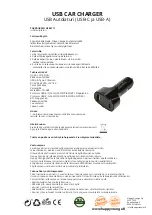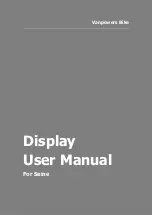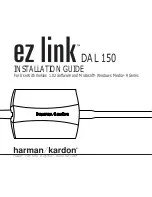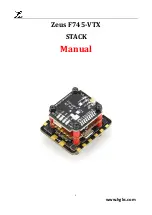
2
Now place the DSII module to the point where previously the focuser was and fix it with the 3 screws.
If you unscrew the screws again you may rotate the DSII module. This allows to bring the handle of the
Pressure-Tuner in any position. Tighten the screws again. If you want to change the position of the DSII
Pressure-Tuner later, you only need to loosen the screws.
Now place the focuser at the end of the DSII module. Here you will find again 3 screws. With those the focuser
can be mounted securely at the DSII. Now the installation of the DSII module at the LS80MT or LS100MT
telescope is finished.
Tuning:
Install the telescope now again on your mount, and point it to the sun. Move the handle of the originally
Pressure-Tuner back into the position which you have previously noticed. Now make a reset at the Pressure-
Tuner of the DSII module, like you know it from your normal Pressure-Tuner. Then you look through the
eyepiece, and turn the handle of the DSII Pressure-Tuner so far on the cylinder until you can see the surface
details of the sun at best. You can also adjust the original Pressure-Tuner some time until the image is optimal.
The DSII system utilizes a unique optical design that works to narrow the bandwidth while also removing the
back-ghosting that would normally occur with 2 highly reflective etalons sitting in such close proximity to one
another. This ghost removal would typically be done by tilting one of the etalons with respect to the other. But
then the Etalons are tilted so much, they are often no longer optimal in the H-alpha line. The optical design of the
DSII system works that the “ghost” images are always in an area outside the normal field of view. However,
users who have very low magnification eyepieces with a wide field of view may notice a “halo”. Increasing the
magnification or using an eyepiece with a narrower field of view will reduce this effect. While we strive to provide
perfect anti-reflection coatings at the Hydrogen-alpha line the residual reflections are reduced to 0.1%.
Therefore not all back scatter can be totally removed.
Unfortunately possible residual reflections cannot be completely avoided. These can become noticeable as a
strong brightening around the sun. This so-called "glow" is not a problem when observing the solar surface. But
it can make the observation of prominences difficult, and many observers find it disturbing. If such residual
reflections occur, we recommend the Anti-Reflection-Filter HRG/SFPT with item number 0551396 as an
additionally available accessory.
Lunt-Solar-Systems - Exclusive European Distributor
Bresser GmbH
Gutenbergstrasse 2, D-46414 Rhede, Germany
Phone: +49 (0) 2872 – 80 740
E-Mail: [email protected]
www.bresser.de




















